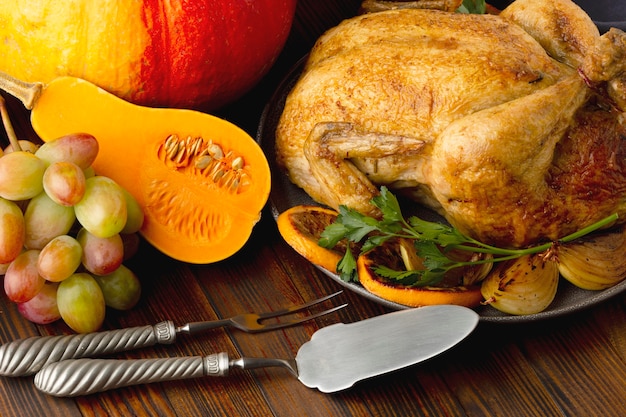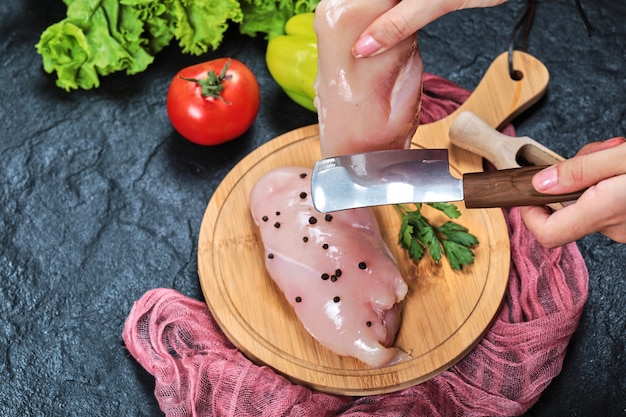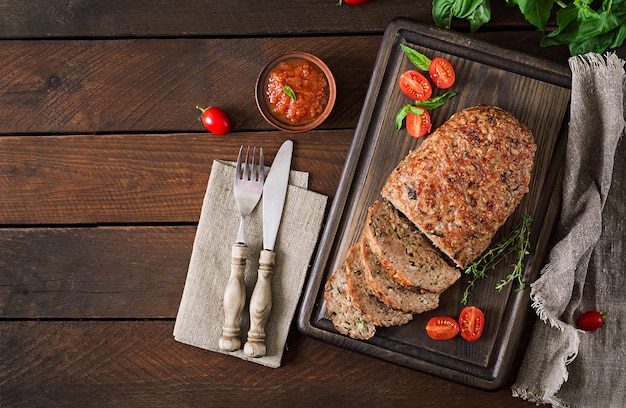Alright, folks, let's talk turkey. I mean, literally. As a seasoned cook (and let’s be honest, a bit of a turkey aficionado), I've roasted my fair share of birds over the years. And let me tell you, there’s nothing quite like the aroma of a perfectly roasted turkey filling your kitchen on a special occasion. But let’s be real, getting that golden-brown, juicy, and flavorful turkey breast isn’t always a piece of cake. It can be tricky to nail the cooking time, especially if you’re dealing with a big breast or a smaller one, or if you want it cooked to a specific temperature. Well, worry no more! I’m here to share my top tips and tricks for roasting a turkey breast to perfection, and you'll be a turkey-roasting master in no time.
Part 1: The Essential Prep Work

First things first, let's tackle the prep work. A good foundation is crucial for any successful turkey roast.
1. Selecting the perfect turkey Breast
Choosing the right turkey breast is the first step to a delicious meal. I usually go for a boneless, skin-on turkey breast, as it tends to be more forgiving and easier to roast. It's also a great choice because the skin helps keep the meat moist and tender while roasting. You want a breast that’s plump and firm, with no discoloration. Look for a good ratio of meat to bone, which will ensure a more even cook and prevent the bone from drying out the surrounding meat. If you're feeling adventurous, try a brined turkey breast. Brining involves soaking the turkey breast in a salt-water solution before roasting, which adds extra moisture and flavor, and trust me, it's worth the extra effort! You can find countless brining recipes online, but a simple salt, sugar, and water solution works wonders.
2. Prepping the Turkey Breast
Okay, now that you’ve got your turkey breast, it’s time to get it prepped for the oven. I start by patting it dry with paper towels. This helps prevent steam build-up, leading to a crispier skin. Then, I like to rub it all over with a mixture of olive oil, salt, and pepper. Olive oil helps the skin brown beautifully, while salt and pepper provide the base for all the delicious flavors to come. You can also add herbs and spices to your liking. I often add a touch of paprika for a nice colour and a bit of warmth. Adding a sprinkle of dried herbs like thyme, rosemary, or sage can create a beautiful aromatic profile. Don’t be shy with the seasoning; it's all about flavour! Don’t forget to season the cavity as well for an added boost of flavor.
3. Getting Ready for the Oven
Before you pop the turkey breast into the oven, there are a few things to consider. First, preheat your oven to 350°F (175°C). This ensures the turkey breast cooks evenly and develops a lovely crust. Then, find a roasting pan that's big enough to hold your turkey breast comfortably. A good rule of thumb is to choose a pan that's at least two inches wider than the turkey breast to allow for air circulation and prevent overcrowding. You can also line the pan with parchment paper for easier clean-up later.
Part 2: Understanding turkey breast cooking time

Okay, now let’s dive into the nitty-gritty: cooking time. Here’s the thing about roasting turkey breasts – there’s no one-size-fits-all answer. The time it takes to cook your turkey breast depends on several factors:
1. The Size of the Turkey Breast
This is a big one. A smaller turkey breast will cook faster than a larger one. That’s why it's crucial to check the weight of your breast before you start roasting. Generally, you should aim for about 15-20 minutes per pound of turkey breast. But don't just go by the weight.
2. The Thickness of the Turkey Breast
A thicker breast will take longer to cook than a thinner one. If you've got a thick breast, you'll need to adjust your cooking time accordingly. You can use a meat thermometer to ensure the turkey breast is cooked through.
3. Oven Temperature
The temperature of your oven can also affect the cooking time. A higher oven temperature will cook the turkey breast faster, while a lower oven temperature will take longer. I always stick to the recommended temperature, but if your oven tends to run hot or cold, you might need to adjust the time. You can use an oven thermometer to calibrate your oven's temperature for accurate results.
Part 3: Roasting Your Turkey Breast to Perfection

Now comes the exciting part! Roasting the turkey breast. Let’s break down the steps:
1. Placing the Turkey Breast in the Oven
Once your oven is preheated, you can place the turkey breast in the roasting pan. Make sure it's sitting comfortably in the pan, with plenty of room around it. If you're using a roasting rack, place the turkey breast on the rack to allow for even cooking. The rack elevates the turkey breast, promoting air circulation around it, which leads to a crispier skin and more even cooking.
2. Checking the Turkey Breast for Doneness
While the turkey breast is roasting, it’s important to keep an eye on it. You’ll need to check for doneness using a meat thermometer. The turkey breast is fully cooked when the internal temperature reaches 165°F (74°C). You can check the temperature in the thickest part of the breast, avoiding the bone. Avoid opening the oven door too frequently, as it can cause the temperature to fluctuate and slow down the cooking process.
3. Resting the Turkey Breast
Once your turkey breast is cooked, it's important to let it rest before carving. Resting allows the juices to redistribute, resulting in a juicier and more flavorful turkey. Cover the turkey breast loosely with foil and let it rest for at least 15 minutes before carving. If you carve the turkey breast immediately, the juices will run out, leaving you with a dry and disappointing meal.
Part 4: Tips for a Juicy and Flavorful Turkey Breast
Now let's talk about some techniques to enhance your turkey breast game:
1. Basting Your Turkey Breast
Basting your turkey breast helps to keep it moist and flavorful. You can baste it with pan drippings or with a simple mixture of butter, broth, and herbs. I often use a mixture of chicken broth and white wine. Basting every 30 minutes or so, making sure to rotate the turkey breast to ensure even cooking. Basting keeps the turkey breast moist and helps develop a crispy skin. It also creates a flavorful glaze that enhances the taste.
2. Using a Thermometer
To ensure your turkey breast is cooked through, a meat thermometer is essential. It takes the guesswork out of cooking and lets you know exactly when it's ready. Insert the thermometer into the thickest part of the breast, avoiding the bone, and check the temperature. Don't rely solely on visual cues like the skin being golden brown, as these can be deceiving. A thermometer ensures your turkey breast is cooked to a safe temperature and eliminates any risk of undercooking.
3. Adding Flavor to Your Turkey Breast
Don't be afraid to experiment with different flavours. You can use herbs, spices, citrus zest, garlic, or even a bit of maple syrup to enhance the flavour of your turkey breast. A simple rub of garlic powder, onion powder, and paprika can add depth and complexity. Adding a few sprigs of rosemary or thyme in the cavity during roasting infuses the turkey breast with a wonderful aroma and subtle flavor.
4. Avoid Overcrowding the Pan
Ensure there's enough space around the turkey breast in the pan to allow for proper airflow and even cooking. If the pan is too crowded, the turkey breast may steam rather than roast, resulting in a less flavorful and less crispy skin.
5. Utilize a Roasting Rack
A roasting rack is a valuable tool that elevates the turkey breast, allowing air to circulate underneath, resulting in a crispier skin and more evenly cooked meat. If you don't have a roasting rack, you can create a makeshift one using vegetables like carrots and celery.
Part 5: Turkey Breast Cooking Time Chart
Here’s a table to help you estimate the cooking time for your turkey breast based on its weight:
| Weight (lbs) | Cooking Time (minutes) |
|---|---|
| 4-6 | 1 1/2 - 2 hours |
| 6-8 | 2 - 2 1/2 hours |
| 8-10 | 2 1/2 - 3 hours |
Remember, these are just estimates. Always check the internal temperature of the turkey breast to ensure it's cooked through.
Part 6: Leftovers
Now, let's talk about the delicious leftovers. Turkey breast is fantastic for sandwiches, salads, or even a tasty turkey soup. You can also use it in casseroles, enchiladas, or pasta dishes. Be creative and experiment with different recipes. You can even dice it up and add it to your favorite breakfast omelets or scrambled eggs.
Part 7: Serving Your Turkey Breast
Once your turkey breast is cooked and rested, it's time to carve it and serve it up. I like to carve it into thin slices, so it's easy to eat. You can serve it with your favourite sides, like mashed potatoes, gravy, cranberry sauce, and stuffing.
Part 8: Different Roasting Methods
If you're feeling adventurous, you can try roasting your turkey breast in different ways. You can roast it in a slow cooker for a super moist and tender result, or even try roasting it in a dutch oven.
1. Roasting in a Slow Cooker
For a hands-off approach, a slow cooker is a great option. Place the turkey breast in the slow cooker, add some broth or wine, and cook on low for 6-8 hours or on high for 3-4 hours. The long, slow cooking method results in a wonderfully tender and flavorful turkey breast.
2. Roasting in a Dutch Oven
A Dutch oven is perfect for creating a crispy skin and evenly cooked turkey breast. Preheat the Dutch oven with a drizzle of olive oil, then sear the turkey breast on all sides until golden brown. Add your favorite aromatics, like onions, garlic, and herbs, and cover the Dutch oven. Roast in the oven for the recommended time, basting occasionally.
Part 9: FAQs
Here are some common questions about roasting turkey breasts, and their answers:
1. How do I know if my turkey breast is cooked through?
The best way to know if your turkey breast is cooked through is to use a meat thermometer. Insert the thermometer into the thickest part of the breast, avoiding the bone, and check the temperature. It should reach 165°F (74°C).
2. What should I do if my turkey breast is dry?
If your turkey breast is dry, you can try basting it more frequently while it's roasting. You can also add a bit of broth or wine to the pan to help keep it moist. Next time, make sure to rest the turkey breast for at least 15 minutes after cooking to allow the juices to redistribute. You can also try using a brining solution before roasting, which helps retain moisture and results in a tender, juicy turkey breast.
3. How long can I store leftover turkey breast?
Leftover turkey breast can be stored in the refrigerator for up to 3-4 days. You can also freeze it for up to 2-3 months. Make sure to wrap it tightly in plastic wrap or foil before storing it in the freezer. To reheat frozen turkey breast, thaw it in the refrigerator overnight and then reheat it in the oven or microwave.
4. What are some good side dishes for turkey breast?
Some good side dishes for turkey breast include mashed potatoes, gravy, stuffing, cranberry sauce, green beans, asparagus, and sweet potatoes. The possibilities are endless, so get creative and try different combinations. Consider serving it with roasted vegetables, a simple green salad, or even a creamy risotto for a more elegant touch.
5. Can I roast a turkey breast in a slow cooker?
Yes, you can absolutely roast a turkey breast in a slow cooker! It's a great way to ensure a super moist and tender turkey breast. Just place the turkey breast in the slow cooker, add some broth or wine, and cook on low for 6-8 hours or on high for 3-4 hours. You can also add herbs and spices to your liking. The slow cooker's gentle heat allows the turkey breast to cook slowly and evenly, resulting in a melt-in-your-mouth texture.
There you have it! Your comprehensive guide to roasting the perfect turkey breast. Now, go forth and conquer those thanksgiving dinners, holiday feasts, or even just a simple weeknight meal! Remember, practice makes perfect, and soon, you'll be a pro at roasting turkey breasts like a true culinary champion. Happy cooking!
Everyone is watching

Prime Rib Roast Cooking Time Chart: Per Pound Guide
Cooking TipsPrime rib roast. Just the name conjures images of lavish dinners, crackling fires, and hearty laughter. It’s ...

How Long to Bake Potatoes in the Oven (Perfect Every Time)
Cooking TipsBaked potatoes are a staple in my kitchen. They're incredibly versatile, delicious, and surprisingly easy to m...

Perfect Rice Every Time: The Ultimate Guide to Cooking Rice
Cooking TipsAs a self-proclaimed foodie, I've always been a bit obsessed with rice. It's the foundation of countless cuisi...

The Ultimate Guide to Cooking Asparagus: Tips, Techniques, and Recipes
Cooking TipsAsparagus. The mere mention of this spring delicacy conjures up images of vibrant green spears, crisp and burs...

Ultimate Guide to Cooking the Perfect Thanksgiving Turkey
Cooking TipsThanksgiving. Just the word conjures up images of overflowing tables laden with delicious food, the scent of r...
